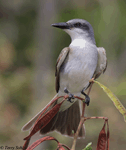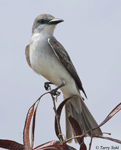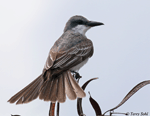| Length: 9 inches | Wingspan: 14 inches | Seasonality: Non-resident in South Dakota |
| ID Keys: Gray upperparts, white underparts, long bill | ||
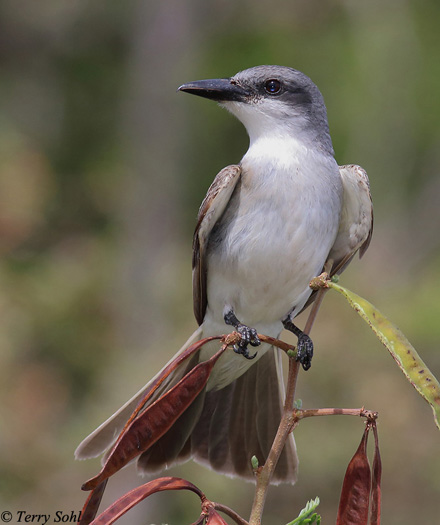 The
Gray Kingbird is a widespread flycatcher species in the Caribbean. In
the United States, they are summer breeding residents in Florida. In
the United States, they are most likely to be confused with the
Eastern Kingbird, but the much
longer bill differentiates the Gray Kingbird. They are a species that
has adapted well to a human presence, as they can often be found on farmland
and around cities.
The
Gray Kingbird is a widespread flycatcher species in the Caribbean. In
the United States, they are summer breeding residents in Florida. In
the United States, they are most likely to be confused with the
Eastern Kingbird, but the much
longer bill differentiates the Gray Kingbird. They are a species that
has adapted well to a human presence, as they can often be found on farmland
and around cities.
Habitat: In the United States portion of their range, Gray Kingbirds will utilize a variety of habitats, including both natural landscapes such as brushland and open woodland, as well as man-made landscapes such as agricultural land and suburban settings.
Diet: Primarily feeds on insects. They will also sometimes take small vertebrates such as baby birds and small lizards. They will also feed on fruits and berries in some locations.
Behavior: Forages by observing from a perch and flying out to capture insects in mid-air. They will also sometimes hover and glean insects from foliage and branches.
Nesting: The nest of a Gray Kingbird is a cup of sticks, grasses, weed stems, and roots, lined with softer material such as fine grasses. The female usually lays 3 or 4 eggs, with female doing most of the incubation. Upon hatching, both parents help to feed the young.
Song: The most commonly heard call of a Gray Kingbird is a high-pitched chattering.
Migration: Gray Kingbirds are considered permanent residents in parts of their Caribbean range, but those found in the southeastern United States are just summer residents.
Interactive eBird Map: Click here to access an interactive eBird map of Gray Kingbird sightings
Similar Species: In range, most likely to be confused with the Eastern Kingbird, but the much larger bill and lack of a white band on the tail tip make the Gray Kingbird easy to differentiate from the Eastern Kingbird, if seen well.
Conservation Status: Populations are found over a wide geographic area, and appear to be stable. The IUCN lists the Gray Kingbird as a species of "Least Concern".
Further Information: 1) Cornell's NeoTropical Birds - Gray Kingbird
2) South Carolina Department of Natural Resources - Gray Kingbird
3) USGS Patuxent Bird Identification InfoCenter - Gray Kingbird
Photo Information: Photo taken in June 2015 - St. John's Island, U.S. Virgin Islands - Terry Sohl
| Click below for a higher-resolution map |
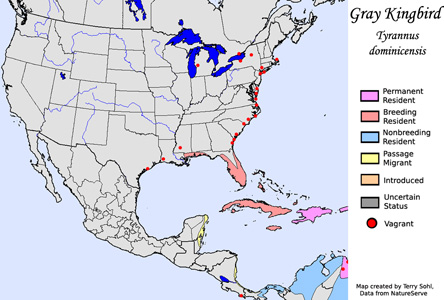 |
| South Dakota Status: Non-resident in South Dakota |
Additional Gray Kingbird Photos
